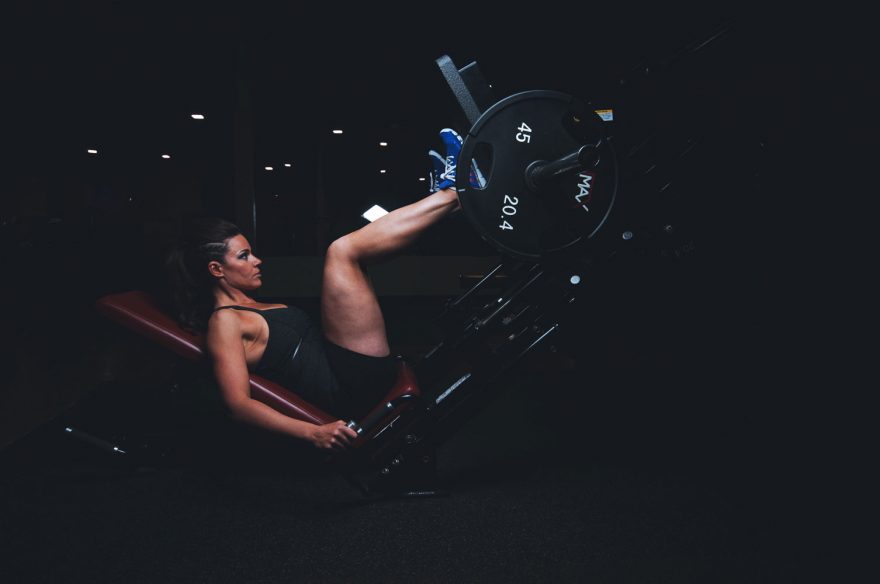
Ever find yourself flagging halfway through the ski season and it suddenly starts to become more of a chore than anything fun? Do you wake up each morning with sore and stiff muscles from the day before? If these aches and pains sound familiar to you then it’s quite likely that you haven’t prepped your body in the run up to the season.
The truth is, skiing and snowboard fitness doesn’t just have to come from the slopes – you can really help to compliment your season by doing sport-specific fitness, strength, and flexibility routines in the gym. The reason doing sport-specific is important is because you use all sorts of different muscles on the slopes that you wouldn’t necessarily normal use in your day to day life.
Not only will preparation in the gym lead to a more enjoyable experience on the snow but it will also help to prevent you from getting injured since the chances are that you’ll be doing some heavy landing. Additionally, a lack of fitness will lead to fatigued skiing with poor technique which becomes a recipe for more injuries.
Focus on functionality
You should primarily be focusing on functional fitness throughout your training regime. That’s to say, most of the exercises you do should lend themselves well to benefiting you on the slopes. For example, as tempting as it is, working on your biceps every other day isn’t going to be a great deal of help when skiing simply because they’re not heavily relied on in the sport.
In skiing and snowboarding, your body needs to be able to handle quick changes in direction, good balance, excellent core strength, powerful legs, and adequate endurance levels. In this article, we’re going to arm you with enough flexibility, strength, and endurance
Flexibility
Yoga is incredibly beneficial to the sports of skiing and snowboarding because it forces you to really engage your core muscles, practice good balance, and improve your flexibility. Moreover, yoga is excellent for helping you reduce the chances of injury. On a whole, standing and balancing exercises will be some of the most useful.
Chair pose
When you’re skiing or snowboarding, there is near-constant pressure on the quads due to your legs being flexed at varying degrees most of the time. To perform this exercise, exhale and bend your knees like you’re about to sit on a chair. Lean forward from the hips slightly while keeping a straight back and arms stretched above you. Keep your neck in line with your back and make sure to engage your core muscles throughout the pose.
Warrior Pose
Balance is one of the key skills you need on the slopes because of the interchangeable terrain and constant transfer of your bodyweight. The warrior takes a lot of concentration to master as well as decent strength in your legs and core. You can enter this position from downward dog, stepping one foot forward towards your hand. Keep your front leg bent and lift your torso up from the ground, with your hands straight in the air.
Boat Pose
The boat pose forces you to fully engage your stomach and lower back muscles, all the while, maintaining concentration and balance. Aim to keep your back as straight as you can and rock back so that you’re balancing just about on your tailbone. When balanced, lift your legs to a 45-degree angle from the floor, keeping them straight. Hold for 30 or 60 seconds at a time, depending upon your ability level.
Strength training
There are endless variations of strength exercises you could do to improve your performance, however, sometimes it’s best just to keep it straight forward. We’re going to run through a few of the most fundamental strength exercises you can incorporate into your routine.
Box jumps
Box jumps are excellent for explosive power and agility, both key skills needed on the slopes. The idea with box jumps is to make them as explosive as possible, recruiting as much muscle fiber as possible. Make sure to take your time and steady yourself before performing each box jump.
Single-leg leg press
On this exercise, you should aim to lower the weight very steadily and push it out explosively, making sure not to lock your knee at the end of the push. Skiing, in particular, requires great strength and power while using your legs independently from each other.
Pump squats
This exercise is a killer but it will do wonders for your quad strength and stamina. You can either do this weighted (with a medicine ball for example) or with only your bodyweight. Like a normal squat, you squat down to parallel and without pushing back up, stay in the squat position and perform several small pumps up and down, only moving an inch or two.
Cardiovascular fitness
For these two snow sports, you need a good level of endurance and the ability to maintain explosive speed throughout a run. There are limitless forms of cardio you could be doing within and outside the gym, from the most basic of running to some more complicated routines like plyometric and interval training. As with any kind of exercise, you should keep your cardio varied so that your body is trying to adapt to new styles of training. It’s in the adaptation phase that you will see the most improvements in the gym.
Try to do a mix of long, steady state cardio (bicycle, cross trainer, treadmill) and high intensity interval training. You will need both types of fitness on the slopes because you can spend long and tiring days out there but you’re also doing lots of short and fast bursts of effort. You should aim to perform a good cardio workout around 3-5 times per week, depending upon your current fitness levels and goals.
 Your Privacy Choices
Your Privacy Choices